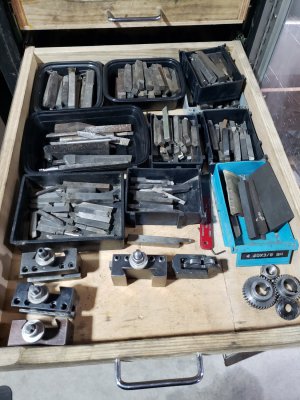- Joined
- Dec 15, 2022
- Messages
- 65
Ok guys, I get the point... gotta learn grinding now. Guess I'll add this to the already steep learning curve.
I do have a couple of 6" grinders that I'm in the middle of replacing the wheels with a range of grit, plus an El Cheap-O belt grinder that I'll also try. Re-watched This Old Tony and Blondihacks vids on the subject, it seems obtainable to get at least as crappy results with my tooling that I am already working with.
What I find interesting however is pretty much everybody grinds the same general shape (the "10 degree everywhere" profile), and my stupid set doesn't have anything close to this shape! Why my set doesn't even have this basic starter-shape is beyond me.
Even tho I'm sure my set is the "junk" Chinese or Indian HSS, I'll probably flip one end around and try grinding my own just for the experience. Once I get a little more experienced with what I'm doing, I'll invest in some better grade HSS blanks. Wish me luck!
I do have a couple of 6" grinders that I'm in the middle of replacing the wheels with a range of grit, plus an El Cheap-O belt grinder that I'll also try. Re-watched This Old Tony and Blondihacks vids on the subject, it seems obtainable to get at least as crappy results with my tooling that I am already working with.
What I find interesting however is pretty much everybody grinds the same general shape (the "10 degree everywhere" profile), and my stupid set doesn't have anything close to this shape! Why my set doesn't even have this basic starter-shape is beyond me.
Even tho I'm sure my set is the "junk" Chinese or Indian HSS, I'll probably flip one end around and try grinding my own just for the experience. Once I get a little more experienced with what I'm doing, I'll invest in some better grade HSS blanks. Wish me luck!




